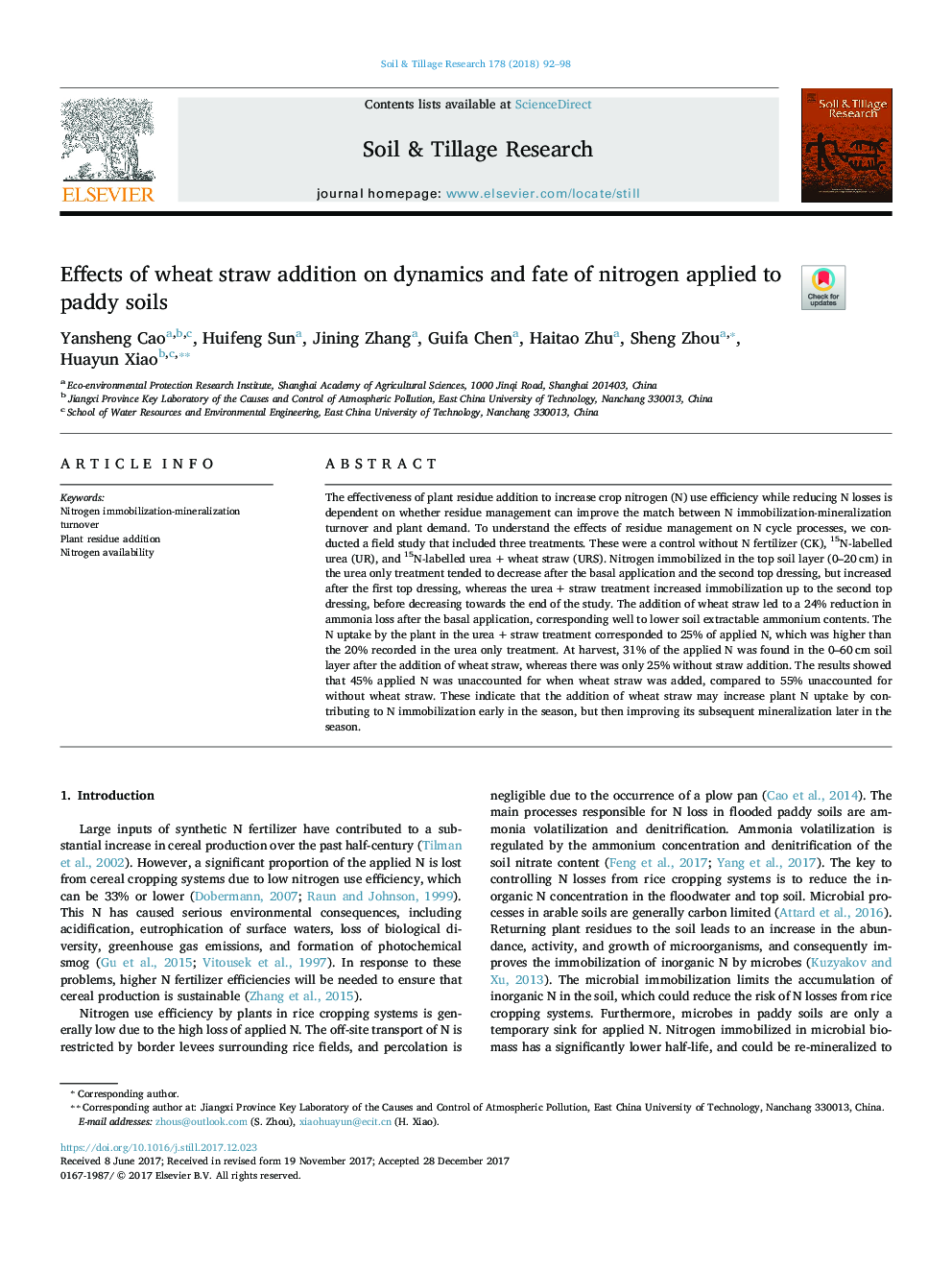| Article ID | Journal | Published Year | Pages | File Type |
|---|---|---|---|---|
| 6773163 | Soil and Tillage Research | 2018 | 7 Pages |
Abstract
The effectiveness of plant residue addition to increase crop nitrogen (N) use efficiency while reducing N losses is dependent on whether residue management can improve the match between N immobilization-mineralization turnover and plant demand. To understand the effects of residue management on N cycle processes, we conducted a field study that included three treatments. These were a control without N fertilizer (CK), 15N-labelled urea (UR), and 15N-labelled ureaâ¯+â¯wheat straw (URS). Nitrogen immobilized in the top soil layer (0-20â¯cm) in the urea only treatment tended to decrease after the basal application and the second top dressing, but increased after the first top dressing, whereas the ureaâ¯+â¯straw treatment increased immobilization up to the second top dressing, before decreasing towards the end of the study. The addition of wheat straw led to a 24% reduction in ammonia loss after the basal application, corresponding well to lower soil extractable ammonium contents. The N uptake by the plant in the ureaâ¯+â¯straw treatment corresponded to 25% of applied N, which was higher than the 20% recorded in the urea only treatment. At harvest, 31% of the applied N was found in the 0-60â¯cm soil layer after the addition of wheat straw, whereas there was only 25% without straw addition. The results showed that 45% applied N was unaccounted for when wheat straw was added, compared to 55% unaccounted for without wheat straw. These indicate that the addition of wheat straw may increase plant N uptake by contributing to N immobilization early in the season, but then improving its subsequent mineralization later in the season.
Keywords
Related Topics
Physical Sciences and Engineering
Energy
Renewable Energy, Sustainability and the Environment
Authors
Yansheng Cao, Huifeng Sun, Jining Zhang, Guifa Chen, Haitao Zhu, Sheng Zhou, Huayun Xiao,
